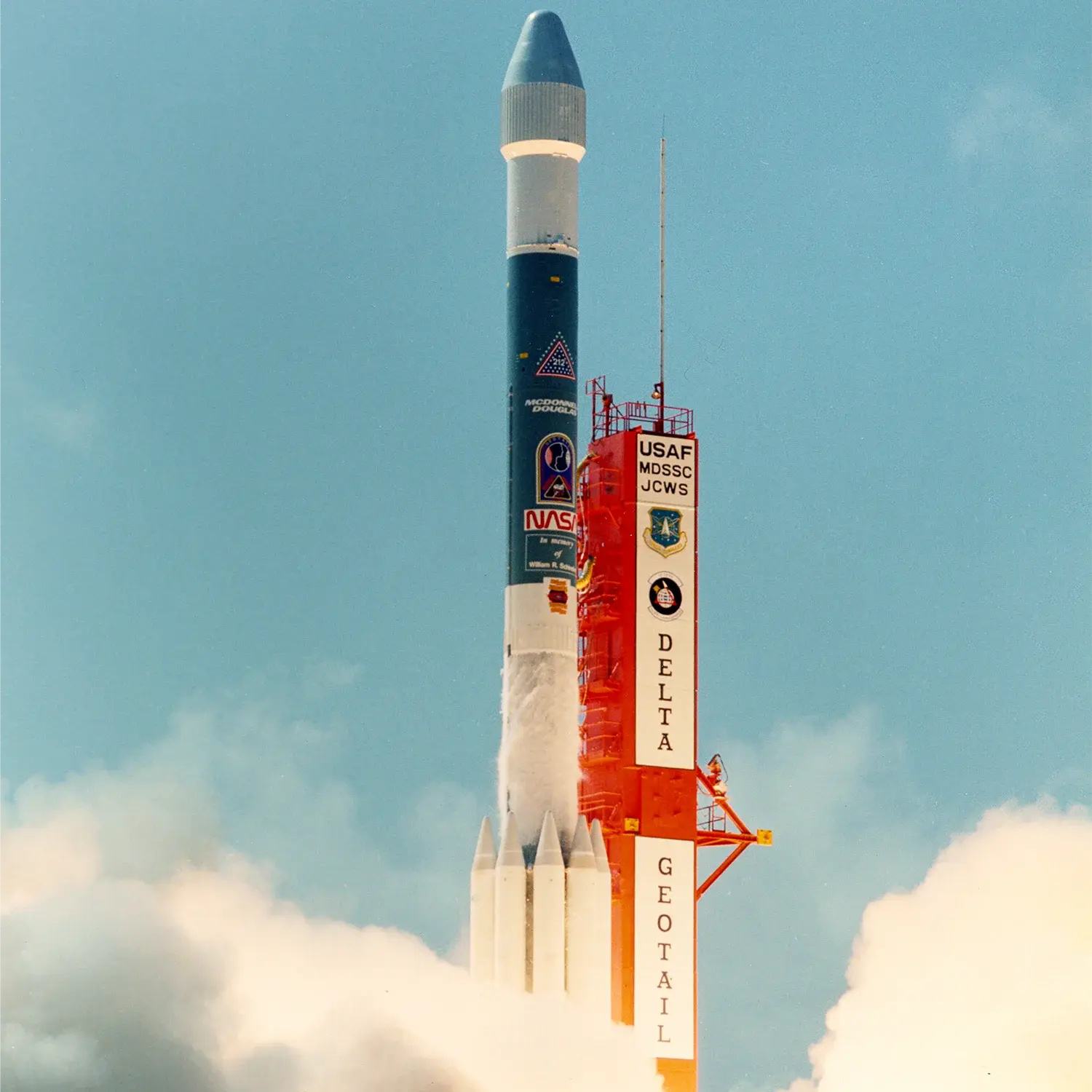GEOTAIL
Launch Success
Liftoff Time (GMT)
14:26:00
Friday July 24, 1992
Watch Replay
24/7 Coverage
Mission Details
Launch Notes
Final Delta II 6000 series launch.
GEOTAIL
Geotail is a satellite observing the Earth's magnetosphere. It was developed by Japan's ISAS in association with NASA and was launched by a Delta II rocket on 24 July 1992 from Cape Canaveral Air Force Station. The primary purpose of this mission is to study the structure and dynamics of the tail region of the magnetosphere with a comprehensive set of scientific instruments. For this purpose, the orbit has been designed to cover the magnetotail over a wide range of distances: 8 R_Earth to 210 R_Earth from the earth. This orbit also allowed it to study the boundary region of the magnetosphere as it skims the magnetopause at perigees. In the first two years, the double lunar swing-by technique was used to keep apogees in the distant magnetotail. This involved 14 lunar flybys. In 1993 the computer that controls the Low Energy Particles experiment locked up. Attempts to reset it failed. This problem was solved by changing the trajectory of the craft during a lunar flyby that took place on 26 September 1993 so that it passed through the shadow of the moon. Power from the batteries was cut while this took place. When the craft left the shadow of the moon, power returned and the computer started working again. In June of 2022, the second and final of Geotail's two data recorders failed, jeopardizing science observation. It was decided to terminate the operation, and the spacecraft was deactivated on 28 November 2022.
High Earth Orbit
1 Payload
980 kilograms
Rocket


Agency
BoeingRocket
Height: 38.1m
Payload to Orbit
GTO: 1,447 kg
Liftoff Thrust
3,481 Kilonewtons
Fairing
Diameter: 2.9m
Height: 8.49m
Stages
3
Strap-ons
9
Launch Site
Stats
Delta II
26th
Mission
6th
Mission of 1992
1992
45th
Orbital launch attempt